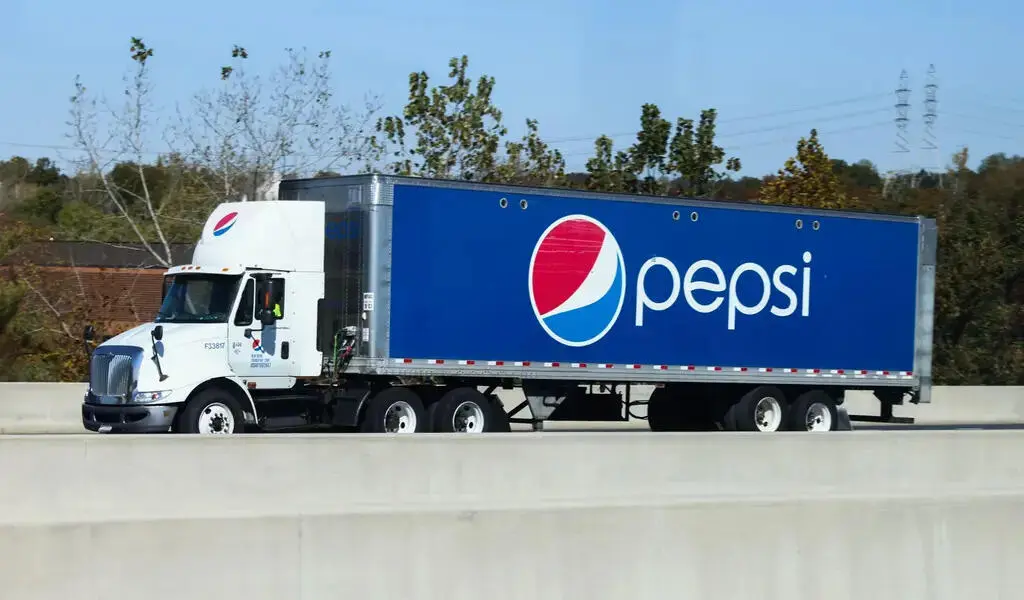Business
Why Logistic Transport Companies Are Essential for Supply Chains
If you are in business, supply chain management and logistic transport company can assist your enterprise in remaining competitive. The much more efficient and economical movement of goods and services, which is essential to your company’s profitability, is tracked and coordinated by these procedures offered by the product distribution company.
Logistic service is significant since it ensures that the goods are delivered to clients in good condition and on time. Learn more about logistics services to keep your company running successfully!
The Need for Logistic Transport Companies in Supply Chains
A Logistic transport company plays a crucial role in supply chains for several reasons. Logistic transport companies are essential for supply chains due to their ability to efficiently move goods, manage inventory, handle international logistics, provide specialized equipment, mitigate risks, optimize costs, and allow businesses to focus on their core competencies.
The involvement of product distribution companies enhances the overall performance, reliability, and competitiveness of supply chains in today’s complex and interconnected business landscape. Here are some key points highlighting their importance:
Efficient Movement of Goods
Logistic transport companies specialize in the efficient movement of goods from a service warehouse to another location. They have the expertise and resources to handle transportation logistics, including route planning, mode selection (road, rail, air, or sea), and freight consolidation.
This enables them to optimize the movement of goods and ensure timely deliveries, thereby reducing lead times and improving overall supply chain efficiency.
Inventory Management
Logistic transport companies help manage inventory levels effectively. By providing reliable and timely transportation services, they enable businesses to maintain lean inventory levels without the risk of stockouts. This allows companies to reduce warehousing costs, free up capital, and avoid overstocking or understocking situations.
Global Reach
In today’s globalized economy, companies often need to transport goods across borders and even continents. Logistic transport companies have extensive networks, partnerships, and knowledge of international trade regulations.
They can navigate the complexities of cross-border logistics, including customs procedures, documentation, and compliance requirements. Their expertise ensures smooth and compliant transportation of goods, enabling companies to expand their markets and access global supply chains.
Specialized Equipment and Expertise
Logistic transport companies possess a wide range of specialized equipment to handle diverse types of cargo. Whether it’s refrigerated containers for perishable goods, flatbed trailers for oversized items, or tankers for hazardous materials, they have the necessary infrastructure to transport goods safely and securely.
Moreover, their experienced personnel understand the handling requirements of different types of cargo, ensuring proper loading, unloading, and transportation methods are employed.
Risk Mitigation
Supply chains are vulnerable to various risks, such as natural disasters, labor strikes, and transportation disruptions. Logistic transport companies mitigate these risks by offering contingency planning and alternative routing options.
They can quickly adapt to various circumstances and find alternative transportation solutions to minimize disruptions and maintain the flow of goods. Additionally, they often provide insurance coverage to protect against loss, damage, or theft of goods during transit.
Cost Optimization
Logistic transport companies help optimize supply chain costs. Through economies of scale and industry knowledge, they can negotiate favorable rates with carriers and consolidate shipments to reduce transportation costs.
By leveraging their expertise, technology, and network efficiencies, they find the most cost-effective solutions for shipping goods, which ultimately benefits businesses by reducing overall supply chain expenses.
Focus on Core Competencies
By outsourcing transportation logistics to logistic transport companies, businesses can concentrate on their core competencies. Instead of investing resources in building and managing in-house transportation infrastructure, companies can rely on the expertise of logistic transport providers.
This allows them to focus on their primary business activities, such as manufacturing, marketing, and customer service, while leaving the transportation aspect in capable hands.
The Role Of Logistics In Business
The role of logistics in a product distribution company is crucial as it encompasses a range of activities that ensure the smooth flow of goods, information, and resources across the entire supply chain.
A well-executed logistics function contributes to overall operational excellence, customer satisfaction, and the profitability of businesses in today’s competitive marketplace. Here are some key aspects highlighting the importance of logistics in business:
1. Efficient Supply Chain Management
Logistic service is responsible for managing the movement of goods and materials coming from suppliers to manufacturers, manufacturers to distributors, and distributors to end customers.
It involves planning, implementing, and controlling the efficient flow and storage of products, ensuring that they reach the right place at the right time. Effective supply chain management enables businesses to reduce costs, boost customer satisfaction, and gain a competitive advantage.
2. Inventory Management
Logistics plays a vital role in inventory management. It involves optimizing inventory levels to ensure that goods are available when needed while minimizing carrying costs. Through accurate demand forecasting, efficient order processing, and coordination with suppliers and distributors, logistics helps maintain optimal inventory levels, reducing the risk of stockouts or overstocking.
3. Transportation and Distribution
Logistics is responsible for managing transportation and distribution networks. It involves selecting the most appropriate transportation modes (road, rail, air, sea) and determining optimal routes to deliver goods efficiently.
Logistics professionals handle carrier selection, freight consolidation, and coordination to ensure timely and cost-effective transportation. This enables businesses to meet customer demands, reduce lead times, and expand their market reach.
4. Warehousing and Storage
Logistics include service warehouses and storage facilities. It involves optimizing warehouse layouts, organizing inventory, and implementing efficient picking, packing, and shipping processes. Logistics professionals ensure that products are stored safely, accessible when needed, and properly handled during storage and distribution.
5. Information Flow and Technology Integration
Logistics relies on effective information flow and technology integration. It involves using systems and technologies such as transportation management systems (TMS), warehouse management systems (WMS), and enterprise resource planning (ERP) systems for tracking inventory, monitoring shipments, and facilitating communication across the supply chain. Timely and accurate information sharing improves coordination, reduces errors, and enhances decision-making throughout the logistics process.
6. Customer Service and Satisfaction
Logistics plays a critical role in meeting customer expectations and ensuring high levels of customer service. Timely deliveries, accurate order fulfillment, and effective communication are essential components of logistics that directly impact customer satisfaction. A well-managed logistics function contributes to positive customer experiences, repeat business, and customer loyalty.
7. Cost Optimization
Logistics is instrumental in cost optimization across the supply chain. By streamlining transportation, warehousing, and inventory management processes, logistics professionals identify opportunities to reduce costs, eliminate inefficiencies, and improve overall operational efficiency. Cost optimization in logistics directly impacts the bottom line of businesses, leading to increased profitability.
8. Risk Management
Logistics involves managing risks associated with transportation, inventory, and supply chain disruptions. This includes assessing and mitigating risks such as delays, damages, theft, natural disasters, or other unforeseen events. Effective risk management strategies in logistics help businesses minimize potential disruptions, protect their assets, and maintain business continuity.
What To Look For Logistic Transport Company
When selecting a logistic transport company, there are several factors to consider. By considering these factors and conducting thorough due diligence, you can select a logistic transport company that aligns with your specific transportation needs and can effectively contribute to the success of your supply chain. Here are some key aspects to look for:
-
Experience and Expertise
Consider the logistic transport company’s experience and expertise in the transportation industry. Look for a company that has a proven track record and a strong understanding of the specific transportation requirements related to your industry or type of goods.
Experienced logistic transport companies are more likely to have efficient processes, established relationships with carriers, and knowledge of regulations and compliance standards.
-
Transportation Network
Assess the logistic transport company’s transportation network and coverage. A reliable logistic transport company should have a service warehouse, an extensive network of carriers, partnerships, and connections that can efficiently transport goods to your desired locations. Consider whether they have the capabilities to handle transportation across different modes (road, rail, air, sea) and whether they can handle both domestic and international shipments if needed.
-
Service Offerings
Evaluate the range of services provided by the logistic transport company. Beyond basic transportation, consider if they offer additional services such as freight consolidation, customs clearance, warehousing, order fulfillment, or value-added services. Having a comprehensive suite of services can streamline your supply chain operations and provide added convenience.
-
Technology and Tracking Capabilities
Look for a logistic transport company that utilizes advanced technology and offers robust tracking capabilities. A reliable transportation management system (TMS) can provide visibility into shipment status, real-time tracking, and proactive notifications. Efficient communication channels and digital documentation systems can enhance transparency and facilitate smooth coordination between all stakeholders involved in the transportation process.
-
Safety and Security Measures
Assess the company’s commitment to safety and security. Look for certifications such as ISO standards, Transported Asset Protection Association (TAPA) certifications, or any industry-specific security certifications. Inquire about their safety protocols, driver training, cargo handling practices, and insurance coverage. A focus on safety and security ensures the protection of your goods and reduces the risk of loss or damage during transportation.
-
Customer Service
Consider the level of customer service provided by the logistic transport company. Prompt communication, responsiveness to queries or concerns, and a dedicated customer support team are important factors. Evaluate their ability to provide proactive updates, address any issues that arise during transportation, and resolve problems in a timely manner. A reliable logistic transport company should prioritize customer satisfaction and have a strong commitment to meeting your specific needs.
-
Cost and Pricing Structure
Assess the company’s pricing structure and evaluate its costs in relation to the value provided. Seek transparency in pricing and understand how they calculate costs such as freight rates, fuel surcharges, and any additional fees or charges. Request quotes and compare them with other providers to ensure competitiveness. However, it’s important to balance cost considerations with the quality and reliability of their services.
-
References and Reviews
Seek references or read reviews from other customers who have worked with the logistic transport company. Their feedback can provide valuable insights into the company’s performance, reliability, and customer service. Additionally, check the company’s reputation online and verify their credentials, licenses, or industry affiliations.
Final Thoughts!
A company needs collaborations with other parties to be actively competitive in the market. Given the importance of logistical transport providers to supply chains, developing solid relationships with them should be given priority.
It can efficiently move items, handle international logistics, provide specialized equipment, manage inventory, mitigate risks, optimize prices, and enhance supply chains’ overall performance, reliability, and competitiveness in today’s complex and interconnected corporate environment.
Suppose you’re looking for a highly reputable and trusted logistics provider. In that case, you can go to logistplus.co.th and receive complete logistical services, including handling product care in the warehouse, storage, preparation for transportation, and management of the transportation system to ensure that the product arrives at the recipient’s hands safely and within the allotted time.
The business also facilitates delivery. It can cover the entire country and is prepared to deliver help across borders to Singapore and Malaysia in under three days.
SEE ALSO: Accusations Of Misleading Flyers: Domino’s Pizza Japan Under Scrutiny By Consumer Agency

Business
PepsiCo Reduces Revenue Projections As North American Snacks And Key International Markets Underperform.

(VOR News) – In the third quarter of this year, Pepsi’s net income was $2.93 billion, which is equivalent to $2.13 per share. This was attributed to the company.
This is in stark contrast to net income of $3.09 billion, which is equivalent to $2.24 per share, during the same period in the previous year. The company’s earnings per share were $2.31 when expenses were excluded.
Net sales decreased by 0.6%, totaling $23.32 billion. Organic sales increased by 1.3% during the quarter when the effects of acquisitions, divestitures, and currency changes are excluded.
Pepsi’s beverage sales fell this quarter.
The most recent report indicates that the beverage and food sectors of the organization experienced a 2% decline in volume. Consumers of all income levels are demonstrating a change in their purchasing habits, as indicated by CEOs’ statements from the previous quarter.
Pepsi’s entire volume was adversely affected by the lackluster demand they encountered in North America. An increasing number of Americans are becoming more frugal, reducing the number of snacks they ingest, and reducing the number of times they purchase at convenience stores.
Furthermore, Laguarta observed that the increase in sales was partially attributed to the election that occurred in Mexico during the month of June.
The most significant decrease in volume was experienced by Quaker Foods North America, which was 13%. In December, the company announced its initial recall in response to a potential salmonella infection.
Due to the probability of an illness, the recall was extended in January. Pepsi officially closed a plant that was implicated in the recalls in June, despite the fact that manufacturing had already been halted.
Jamie Caulfield, the Chief Financial Officer of Pepsi and Laguarta, has indicated that the recalls are beginning to have a lessening effect.
Frito-Lay experienced a 1.5% decline in volume in North America. The company has been striving to improve the value it offers to consumers and the accessibility of its snack line, which includes SunChips, Cheetos, and Stacy’s pita chips, in the retail establishments where it is sold.
Despite the fact that the category as a whole has slowed down in comparison to the results of previous years, the level of activity within the division is progressively increasing.
Pepsi executives issued a statement in which they stated that “Salty and savory snacks have underperformed year-to-date after outperforming packaged food categories in previous years.”
Pepsi will spend more on Doritos and Tostitos in the fall and winter before football season.
The company is currently promoting incentive packets for Tostitos and Ruffles, which contain twenty percent more chips than the standard package.
Pepsi is expanding its product line in order to more effectively target individuals who are health-conscious. The business announced its intention to acquire Siete Foods for a total of $1.2 billion approximately one week ago. The restaurant serves Mexican-American cuisine, which is typically modified to meet the dietary needs of a diverse clientele.
The beverage segment of Pepsi in North America experienced a three percent decrease in volume. Despite the fact that the demand for energy drinks, such as Pepsi’s Rockstar, has decreased as a result of consumers visiting convenience stores, the sales of well-known brands such as Gatorade and Pepsi have seen an increase throughout the quarter.
Laguarta expressed his opinion to the analysts during the company’s conference call, asserting, “I am of the opinion that it is a component of the economic cycle that we are currently experiencing, and that it will reverse itself in the future, once consumers feel better.”
Additionally, it has been noted that the food and beverage markets of South Asia, the Middle East, Latin America, and Africa have experienced a decline in sales volume. The company cut its forecast for organic revenue for the entire year on Tuesday due to the business’s second consecutive quarter of lower-than-anticipated sales.
The company’s performance during the quarter was adversely affected by the Quaker Foods North America recalls, the decrease in demand in the United States, and the interruptions that occurred in specific international markets, as per the statements made by Chief Executive Officer Ramon Laguarta.
Pepsi has revised its forecast for organic sales in 2024, shifting from a 4% growth rate to a low single-digit growth rate. The company reiterated its expectation that the core constant currency profitability per share will increase by a minimum of 8% in comparison to the previous year.
The company’s shares declined by less than one percent during premarket trading. The following discrepancies between the company’s report and the projections of Wall Street were identified by LSEG in a survey of analysts:
SOURCE: CNBC
SEE ALSO:
Old National Bank And Infosys Broaden Their Strategic Partnership.
Business
Old National Bank And Infosys Broaden Their Strategic Partnership.

(VOR News) – Old National Bank, a commercial bank with its headquarters in the Midwest, and Infosys, a firm that specializes in information technology, have recently entered into a strategic expansion of their link, which has been in place for the past four years.
This expansion is more likely to take place sooner rather than later, with the likelihood being higher.
For the purpose of making it possible for Old National Bank to make use of the services, solutions, and platforms that are offered by Infosys, the objective of this expansion is to make it possible for the bank to transform its operations and processes through the application of automation and GenAI, as well as to change significant business areas.
This lets the bank leverage Infosys’ services, solutions, and platforms.
Old National Bank Chairman and CEO Jim Ryan said, “At Old National, we are committed to creating exceptional experiences for both our customers and our fellow employees.”
This statement is applicable to Old National Bank. Infosys is carefully managing the business process innovations that it is putting us through, putting a strong emphasis on efficiency and value growth throughout the process to ensure that it is carried out efficiently.
This is a routine occurrence throughout the entire operation. Because of Infosys’ dedication to our development and success, we are incredibly appreciative of the assistance they have provided.
Old National has been receiving assistance from Infosys in the process of updating its digital environment since the year 2020, according to the aforementioned company.
Ever since that time, the company has been providing assistance. The provision of this assistance has been accomplished through the utilization of a model that is not only powerful but also capable of functioning on its own power.
Infosys currently ranks Old National thirty-first out of the top thirty US banks.
This ranking is based on the fact that Old National is the nation’s largest banking corporation.
It is estimated that the total value of the company’s assets is approximately fifty-three billion dollars, while the assets that are currently being managed by the organization are valued at thirty billion dollars.
Dennis Gada, the Executive Vice President and Global Head of Banking and Financial Services, stated that “Old National Bank and Infosys possess a robust cultural and strategic alignment in the development, management, and enhancement of enterprise-scale solutions to transform the bank’s operations and facilitate growth.”
This remark referenced the exceptional cultural and strategic synergy between the two organizations. Dennis Gada is the one who asserted this claim. This was articulated explicitly concerning the exceptional cultural congruence and strategy alignment of the two organizations.
We are pleased to announce that the implementation of Infosys Topaz will substantially expedite the transformation of Old National Bank’s business processes and customer service protocols. We are exceedingly enthusiastic about this matter. We are quite thrilled about this specific component of the scenario.
Medium-sized banks operating regionally will continue to benefit from our substantial expertise in the sector, technology, and operations. This specific market segment of Infosys will persist in benefiting from our extensive experience. This phenomenon will enable this market sector to sustain substantial growth and efficiency benefits.
SOURCE: THBL
SEE ALSO:
American Water, The Largest Water Utility In US, Is Targeted By A Cyberattack
States Sue TikTok, Claiming Its Platform Is Addictive And Harms The Mental Health Of Children
Qantas Airways Apologizes After R-Rated Film Reportedly Airs On Every Screen During Flight
Business
American Water, The Largest Water Utility In US, Is Targeted By A Cyberattack

The largest regulated water and wastewater utility company in the United States stated Monday that it had been the target of a cyberattack, forcing the company to halt invoicing to consumers.
American Water, The Largest Water Utility In US, Is Targeted By A Cyberattack
American Water, based in New Jersey and serving over 14 million people in 14 states and 18 military facilities, said it learned of the unauthorized activity on Thursday and quickly took precautions, including shutting down certain systems. The business does not believe the attack had an impact on its facilities or operations and said employees were working “around the clock” to determine the origin and scale of the attack.

According to their website, American Water operates over 500 water and wastewater systems in around 1,700 communities across California, Georgia, Hawaii, Illinois, Indiana, Iowa, Kentucky, Maryland, Missouri, New Jersey, Pennsylvania, Tennessee, Virginia, and West Virginia.
SOURCE | AP
-

 News4 years ago
News4 years agoLet’s Know About Ultra High Net Worth Individual
-
Entertainment2 years ago
Mabelle Prior: The Voice of Hope, Resilience, and Diversity Inspiring Generations
-
News11 years ago
Enviromental Groups Tell Mekong Leaders Lao Dam Evaluation Process Flawed
-

 Health4 years ago
Health4 years agoHow Much Ivermectin Should You Take?
-

 Tech3 years ago
Tech3 years agoTop Forex Brokers of 2023: Reviews and Analysis for Successful Trading
-

 Lifestyles3 years ago
Lifestyles3 years agoAries Soulmate Signs
-

 Entertainment3 years ago
Entertainment3 years agoWhat Should I Do If Disney Plus Keeps Logging Me Out of TV?
-

 Health3 years ago
Health3 years agoCan I Buy Ivermectin Without A Prescription in the USA?